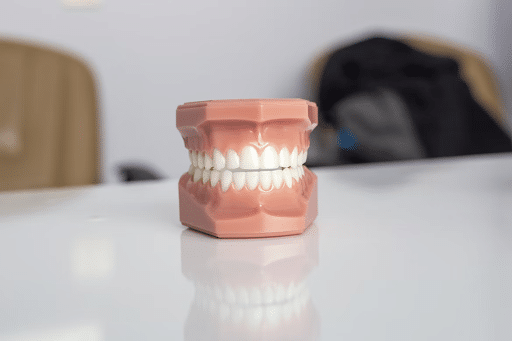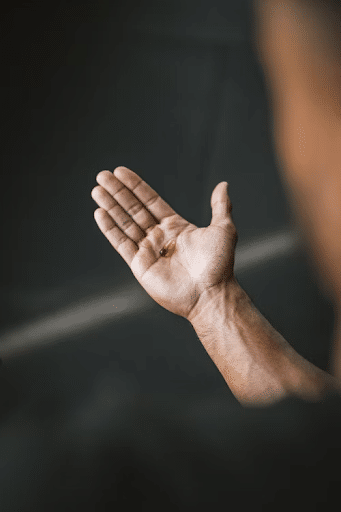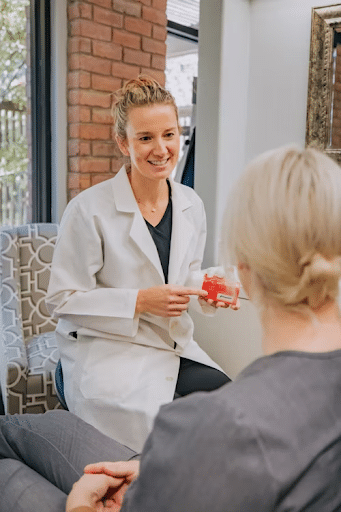Why Patients Say We Are the Best Dentist Office in Tyler, TX

At Smith Dental Care, being called the best dentist in Tyler, TX, isn’t just about fancy ads or slogans—it’s about everyday actions that earn trust, comfort, and smiles. Here’s why our patients say we stand out—and why they keep coming back.
A Warm, Welcoming Atmosphere from the Start
When you walk into Smith Dental Care, you’re not just a patient—you’re family. From the friendly greeting at the front desk to the comforting tone of your hygienist, we craft every moment to make you feel at ease.
Patients often mention feeling nervous before coming in—but leave feeling relaxed and smiling.
“They make sure I’m comfortable… I get really nervous when I go to the dentist… but they make it bearable.” — Nervous patient
A Team that Treats You Like Family
Our team is more than skilled—it’s caring, consistent, and dedicated. Many of our hygienists have been with us for over a decade; some for more than 30 years! That kind of longevity isn’t just a sign of stability—it shows we take good care of our team, who in turn take great care of you.
“They treat you like family… they remember your name when you come back.” — Loyal patient
With decades of trusted experience, Smith Dental Care has been serving East Texas for over 40 years and counting.
All Your Dental Needs — Under One Roof
Why juggle multiple offices when you can get everything done here? From routine cleanings and emergency care to cosmetic treatments, we cover it all.
We even offer sedation options—from nitrous oxide to IV sedation—for patients who are anxious about dental visits.
Comfort matters, and we’ve got you covered. With modern tools like digital X-rays and streamlined technology, we make visits quick, accurate, and as gentle as possible Plus, our comfortable approach and sedation options truly help anxious patients relax.
Honest Communication & Clear, Up-Front Pricing
Dental care shouldn’t come with surprises—least of all hidden fees. At Smith Dental Care, we walk you through your options, explain what’s “must-have” versus what can wait, and help you make confident decisions for your smile and your wallet.
We work with most major insurance providers, help you understand your coverage, and even offer financing options via CareCredit or Sunbit to make care accessible to everyone.
Real Patients, Real Praise
The proof is in the reviews, and the feedback is glowing. With thousands of five-star ratings and a stellar 4.9 average, our patients say it best:
“I would definitely recommend him 10000%!!” — Pohan Leu
“Had a dental emergency… office… staff are all very nice… they explained everything to me in detail.” — Daisy D.
“This is by far the best dental place that I have ever visited!” — Robin T.
“Dr. Douglas and Dr. Smith are very nice and they do quality work… best dentist that I’ve ever been to.” — Marc C.
Across platforms (Birdeye, Chamber of Commerce, BestProsInTown), the story’s the same: highly rated, highly trusted, and highly recommended.
What Makes Them Say We’re the Best Dentist in Tyler?
Patients call us the best dentist in Tyler, TX, for many reasons, but it often starts with trust. With over 35 years of experience serving families in East Texas, Smith Dental Care has built a reputation for quality, consistency, and compassion. Our patients appreciate that we offer everything under one roof. Having a team that’s been together for decades adds to the sense of familiarity and comfort, making every visit feel a little more personal.
Beyond experience and services, patients notice the way we combine modern technology with gentle, empathetic care. Clear communication, upfront pricing, and flexible payment options ensure that care is accessible, while heartfelt reviews and personal stories from long-time patients prove that we’re more than just a dental office, we’re a trusted part of the Tyler community.
In Summary
Search “best dentist in Tyler, TX,” and you’ll find a lot of options. But what makes Smith Dental Care truly stand out isn’t just the services—it’s the heart behind them.
- Decades of caring for families.
- A team that feels like extended family.
- A practice that grows with modern technology and enduring compassion.
- Dentistry that’s easy, comforting, and accessible.
Patient Stories that Speak from the Heart
We’re honored when patients call us “the best”—and every day, we work to make sure we keep earning that trust.
At Smith Dental Care, we believe great dentistry goes beyond teeth—it’s about building lasting relationships. Patients trust us because we listen, explain clearly, and always put their comfort first, creating a dental home they can rely on for years.
Come experience it yourself. Whether it’s your first visit or your next, you’re always welcome at Smith Dental Care—where your smile is our passion, and your comfort is our priority.



